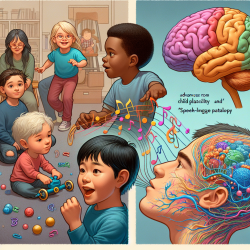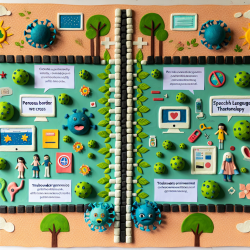Understanding the Male Bias in Autism: A New Perspective
As practitioners in the field of speech-language pathology, understanding the underlying mechanisms of autism spectrum disorder (ASD) is crucial for developing effective interventions. Recent research, such as the study titled "Sex differences in brain plasticity: a new hypothesis for sex ratio bias in autism," offers a fresh perspective on why autism is more prevalent in males than females. This blog will explore the key findings of this research and how they can be applied to improve outcomes for children with autism.
The Enhanced Plasticity Hypothesis
The research conducted by Mottron et al. (2015) proposes the enhanced plasticity hypothesis, which suggests that differences in synaptic and regional brain plasticity between the sexes contribute to the higher prevalence of autism in males. The hypothesis posits that males have a lower threshold for developing plastic reactions to genetic or environmental events, which are often linked to autism. This plastic reaction targets perceptual or language-related brain regions, resulting in the strengths and social challenges observed in autistic individuals.
Implications for Practitioners
Understanding these sex-based differences in brain plasticity can guide practitioners in tailoring interventions to the unique needs of each child. Here are some practical applications:
- Individualized Therapy Plans: Recognizing that males may exhibit stronger perceptual or language-related strengths can help practitioners design therapy plans that leverage these strengths while addressing social communication challenges.
- Focus on Early Intervention: Given the role of plasticity in brain development, early intervention is critical. Practitioners should prioritize early detection and intervention to capitalize on the brain's plasticity during critical developmental windows.
- Gender-Sensitive Approaches: Consideration of gender differences in brain structure and function can lead to more effective and personalized treatment strategies for both boys and girls with autism.
Encouraging Further Research
While the enhanced plasticity hypothesis provides valuable insights, it also opens the door for further research. Practitioners are encouraged to explore the following areas:
- Genetic and Environmental Interactions: Investigate how specific genetic mutations and environmental factors interact to influence brain plasticity and the development of autism.
- Longitudinal Studies: Conduct longitudinal studies to track changes in brain plasticity and cognitive function over time in individuals with autism.
- Cross-Sex Comparisons: Compare brain plasticity and cognitive outcomes between males and females with autism to better understand sex-specific differences.
By integrating these research findings into clinical practice, practitioners can enhance their ability to support children with autism and improve their long-term outcomes. To read the original research paper, please follow this link: Sex differences in brain plasticity: a new hypothesis for sex ratio bias in autism.










